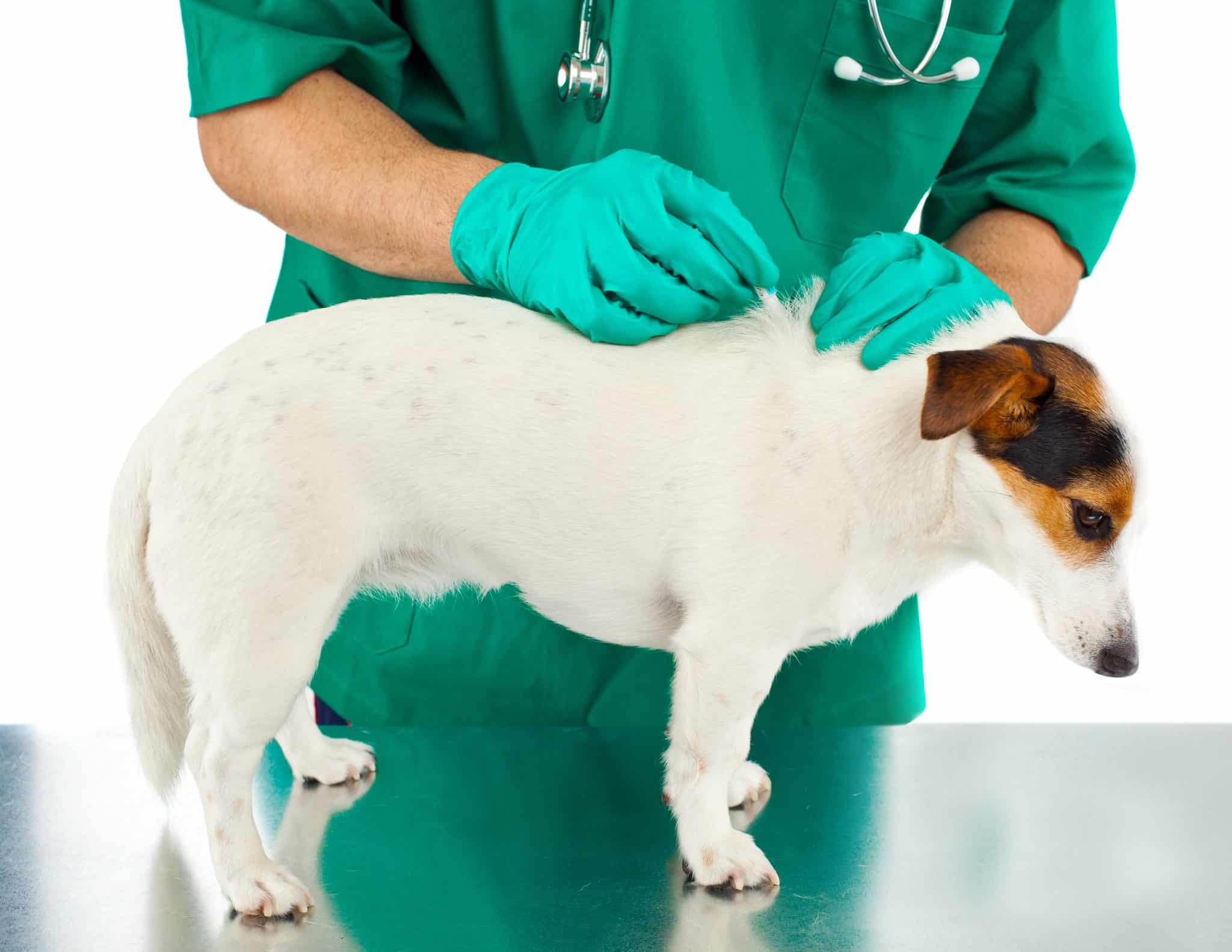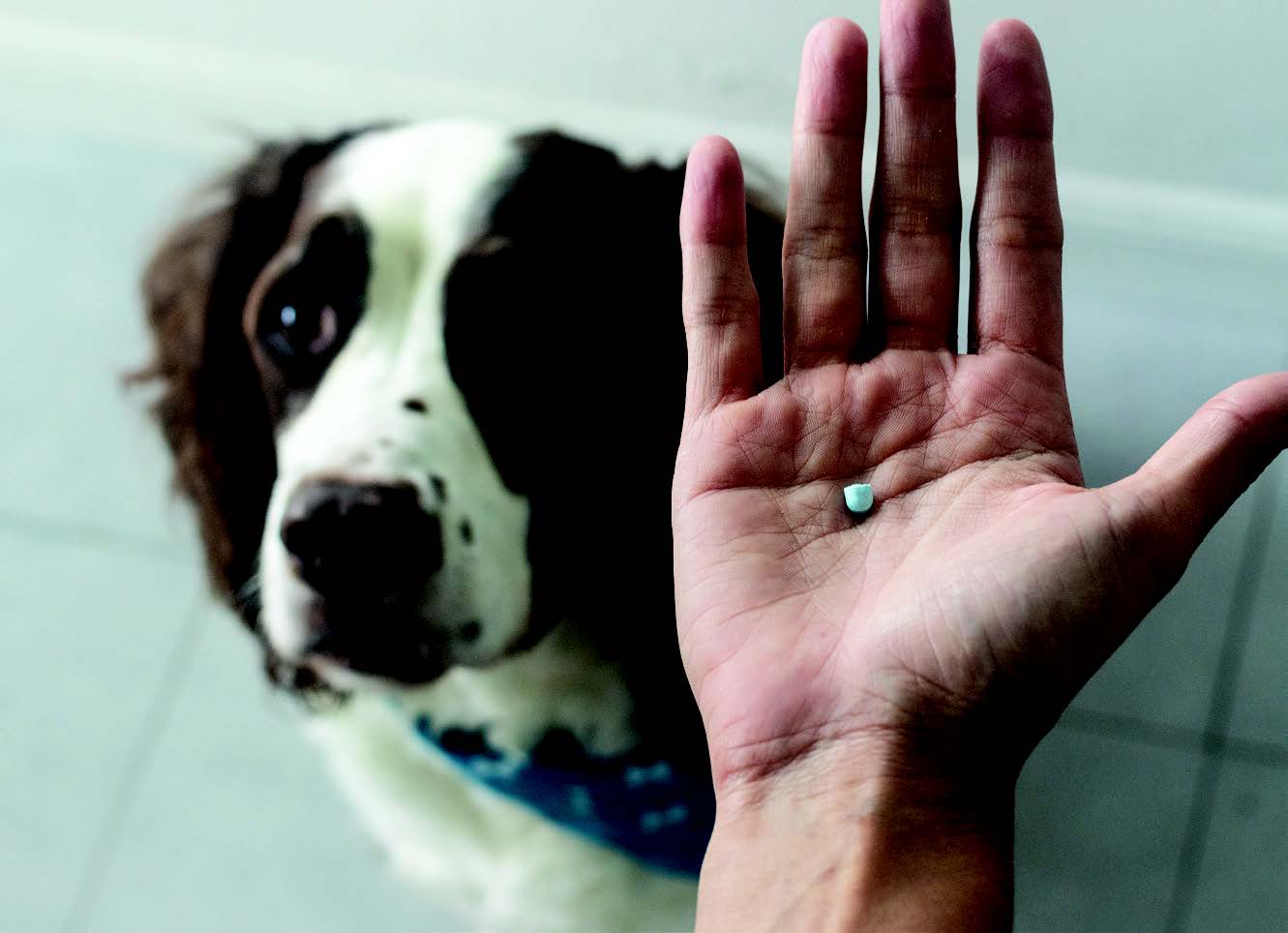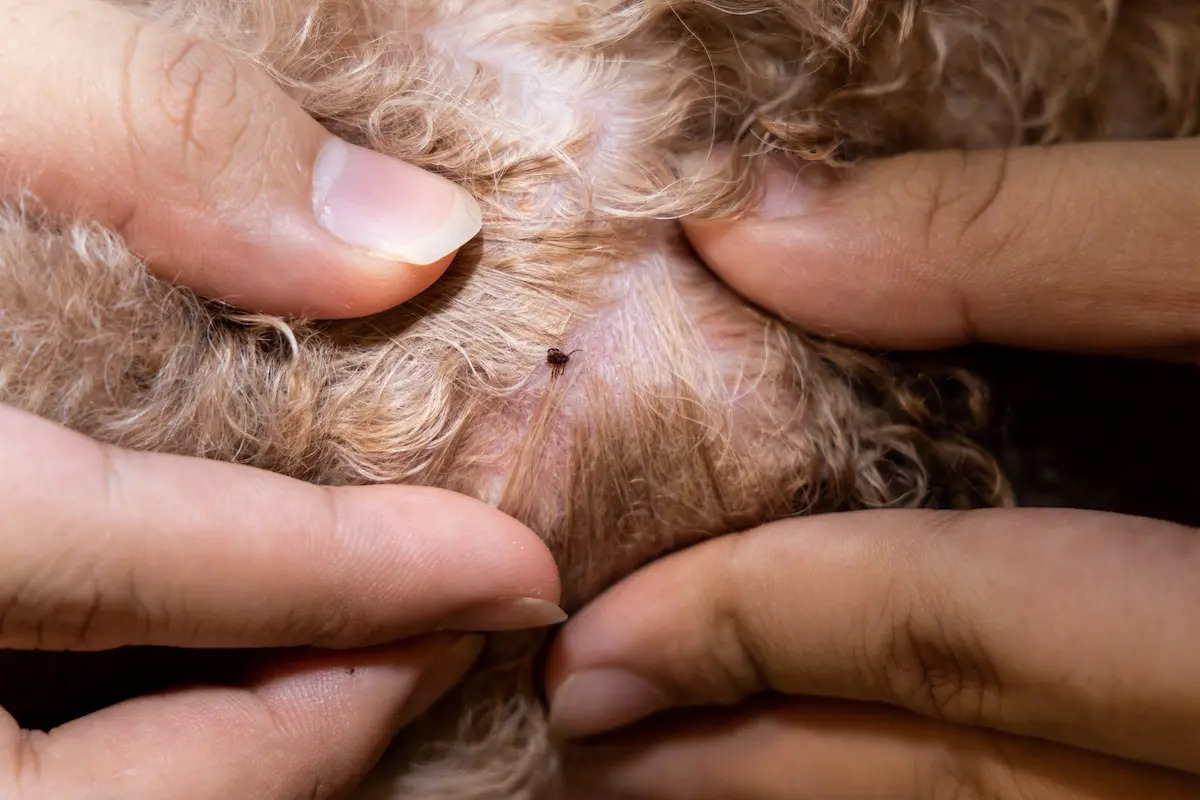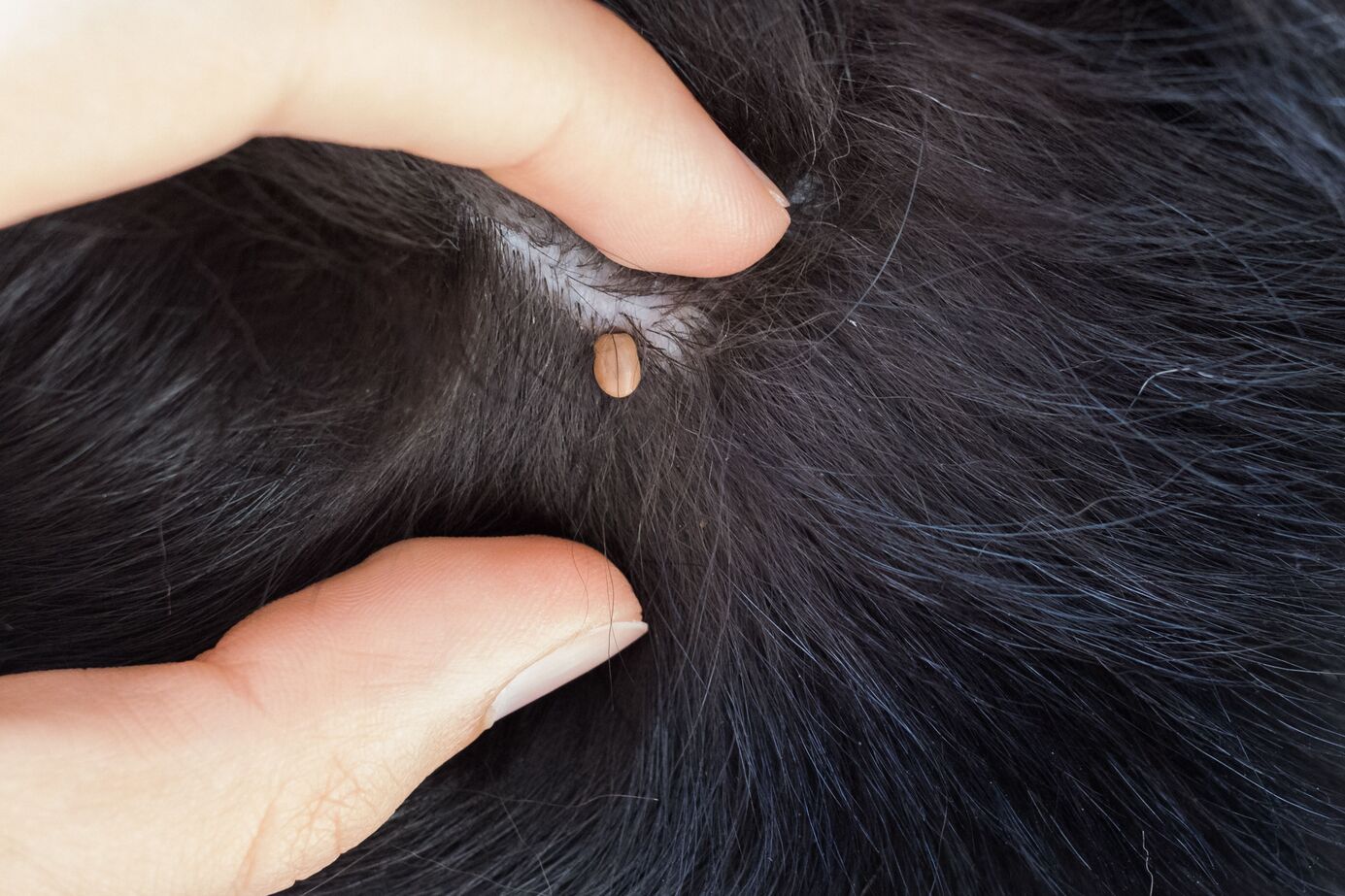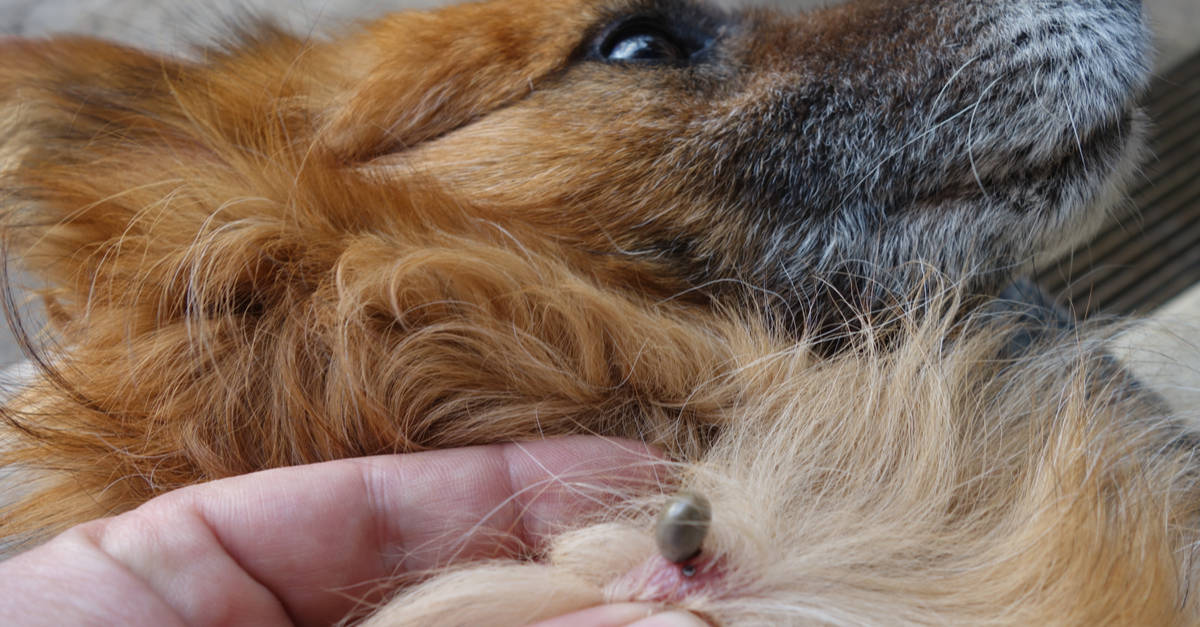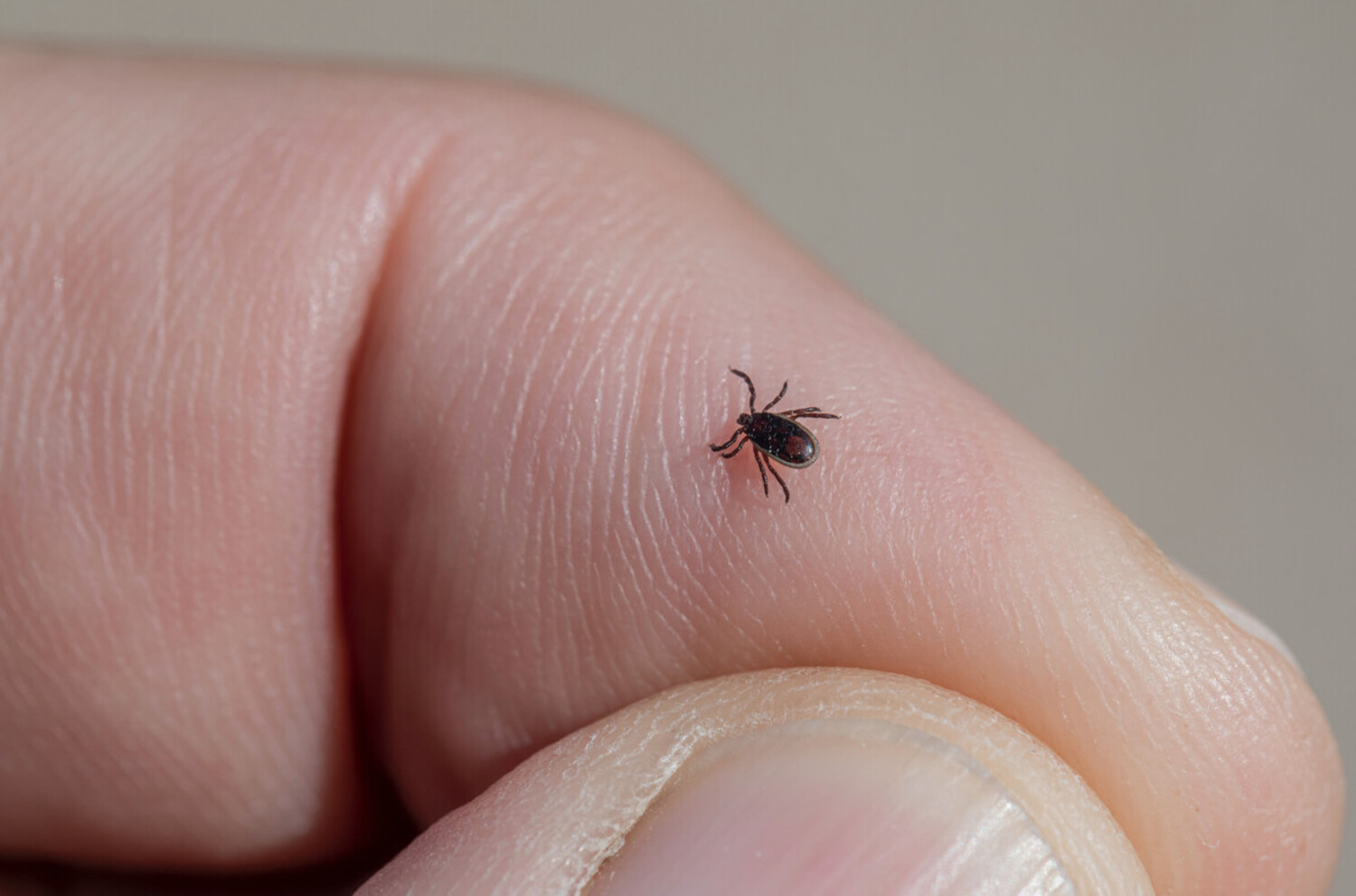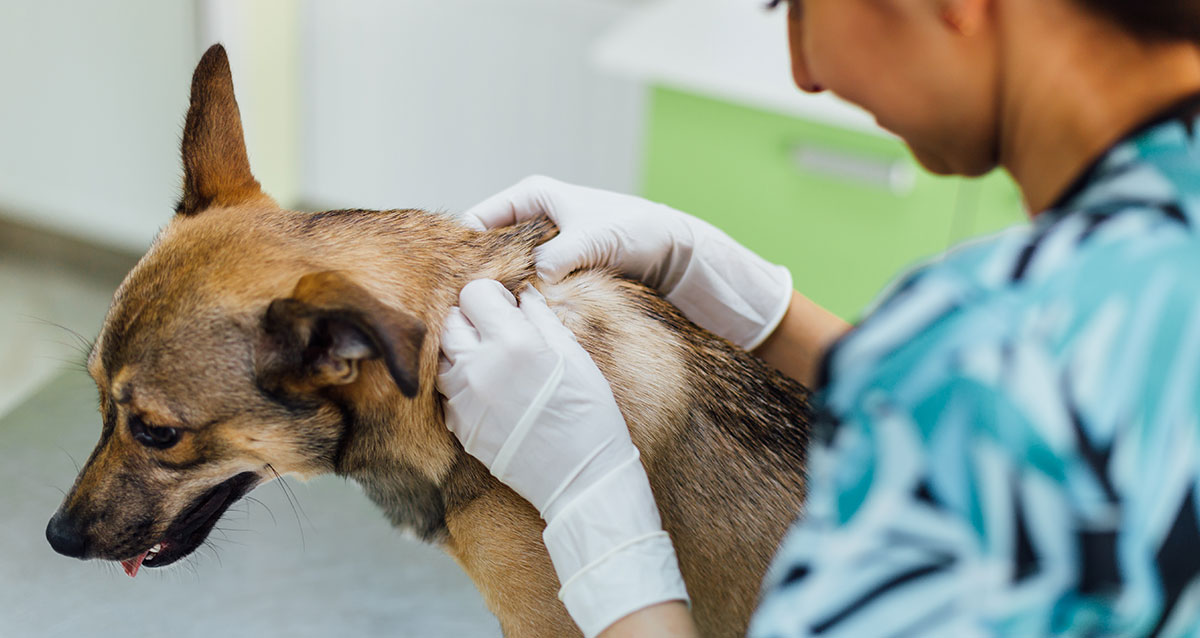Home>Health & Wellness>Common Health Issues>What Happens To Dogs With Fleas


Common Health Issues
What Happens To Dogs With Fleas
Modified: February 21, 2024
Learn about common health issues in dogs with fleas and how to prevent and treat them. Keep your furry friend healthy and happy with our expert tips.
(Many of the links in this article redirect to a specific reviewed product. Your purchase of these products through affiliate links helps to generate commission for Pawsomeoldies.com, at no extra cost. Learn more)
Table of Contents
Introduction
Fleas are a common nuisance for dogs and can cause a range of health issues if left untreated. These tiny, wingless parasites thrive by feeding on the blood of their hosts, and dogs are particularly susceptible to flea infestations. Understanding the impact of fleas on dogs is crucial for pet owners to ensure the well-being of their furry companions.
Fleas not only cause discomfort for dogs but can also lead to more serious health concerns if not addressed promptly. From incessant itching and skin irritation to potential transmission of diseases, the presence of fleas can significantly impact a dog's quality of life. Therefore, recognizing the signs of a flea infestation and taking proactive measures to prevent and treat it are essential aspects of responsible pet ownership.
In this article, we will delve into the various aspects of fleas and their effects on dogs. By exploring the signs and symptoms of flea infestations, understanding the associated health risks, and discussing effective treatment and prevention methods, we aim to equip dog owners with the knowledge needed to safeguard their pets from the perils of fleas. Let's embark on a journey to unravel the impact of fleas on dogs and discover the best practices for ensuring the well-being of our beloved canine companions.
Read more: What Happens If A Tick Bites A Dog
Understanding Fleas and their Impact on Dogs
Fleas, scientifically known as Siphonaptera, are small, wingless parasites that thrive by feeding on the blood of mammals, including dogs. These minuscule pests possess remarkable agility, enabling them to swiftly move through the dense fur of their hosts. While adult fleas primarily reside on the host animal, their eggs, larvae, and pupae can be found in the surrounding environment, such as bedding, carpets, and outdoor areas frequented by the dog.
The impact of fleas on dogs extends beyond mere irritation and discomfort. When a dog becomes infested with fleas, the relentless itching caused by flea bites can lead to skin inflammation, hair loss, and the formation of hot spots. Furthermore, some dogs may develop an allergic reaction to flea saliva, resulting in a condition known as flea allergy dermatitis (FAD). This hypersensitivity can exacerbate the discomfort experienced by the dog and may necessitate specialized treatment to alleviate the symptoms.
In addition to the physical discomfort inflicted by flea infestations, dogs may also experience behavioral changes. The incessant itching and discomfort caused by fleas can lead to restlessness, irritability, and a decline in overall well-being. Moreover, the presence of fleas can disrupt the dog's sleep patterns, leading to fatigue and lethargy.
Beyond the immediate impact on the dog's well-being, fleas pose a potential threat to their overall health. Fleas are capable of transmitting various diseases and parasites, including tapeworms and Bartonella bacteria, commonly known as the causative agent of cat scratch fever. Therefore, a flea infestation not only compromises the comfort of the dog but also elevates the risk of contracting serious health conditions.
Understanding the multifaceted impact of fleas on dogs underscores the importance of proactive flea prevention and prompt treatment. By recognizing the signs of flea infestations and implementing effective preventive measures, dog owners can safeguard their pets from the detrimental effects of these persistent parasites. In the subsequent sections, we will delve deeper into the signs and symptoms of fleas in dogs, the associated health risks, and the best practices for treatment and prevention, empowering dog owners to protect their beloved companions from the perils of flea infestations.
Signs and Symptoms of Fleas in Dogs
Identifying the signs and symptoms of fleas in dogs is pivotal for timely intervention and effective management of infestations. While these minuscule parasites may evade detection at first glance, several indicators can alert dog owners to the presence of fleas.
-
Excessive Scratching and Biting: Dogs infested with fleas often exhibit heightened scratching and biting behavior, particularly around the base of the tail, groin area, and armpits. The incessant itching caused by flea bites prompts the dog to seek relief through vigorous scratching and biting, signaling a potential flea infestation.
-
Hair Loss and Skin Irritation: Flea infestations can lead to hair loss, redness, and skin irritation in affected dogs. The continuous feeding and movement of fleas on the dog's skin can trigger allergic reactions, resulting in dermatitis and the formation of inflamed, itchy patches.
-
Presence of Flea Dirt: Flea dirt, which appears as small, dark specks resembling ground pepper, may be noticeable on the dog's skin and fur. This excrement, consisting of digested blood excreted by fleas, serves as a telltale sign of a flea infestation and can be observed during grooming or when parting the dog's fur.
-
Restlessness and Agitation: Dogs experiencing discomfort due to flea infestations often display restlessness, agitation, and difficulty in settling down. The persistent itching and irritation caused by fleas can disrupt the dog's usual behavior and lead to increased anxiety and restlessness.
-
Hot Spots and Dermatitis: Flea bites can trigger the development of hot spots, which are inflamed, moist, and painful areas on the dog's skin. Additionally, dogs may exhibit signs of flea allergy dermatitis (FAD), characterized by intense itching, redness, and skin lesions in response to flea saliva, indicating a heightened sensitivity to flea bites.
-
Visible Fleas or Flea Bites: In advanced infestations, actual fleas or their bites may be visible on the dog's skin. Flea bites typically appear as small, red bumps, often concentrated in areas where the dog's fur is thinner, such as the abdomen and inner thighs.
Recognizing these signs and symptoms is crucial for promptly addressing flea infestations and alleviating the discomfort experienced by affected dogs. By remaining vigilant and conducting regular inspections of the dog's skin and coat, pet owners can detect flea infestations early and take proactive measures to ensure the well-being of their canine companions.
Health Risks Associated with Fleas
Fleas pose significant health risks to dogs, extending beyond the immediate discomfort caused by itching and skin irritation. These tiny parasites are capable of transmitting various diseases and parasites, amplifying the potential impact on a dog's overall well-being. Understanding the health risks associated with fleas is crucial for dog owners to comprehend the gravity of flea infestations and take proactive measures to safeguard their pets.
One of the primary health risks linked to fleas is the transmission of tapeworms. When a dog ingests fleas carrying tapeworm larvae, it can lead to the development of tapeworm infestations within the dog's gastrointestinal tract. This parasitic infection can result in symptoms such as weight loss, abdominal discomfort, and the shedding of tapeworm segments in the dog's feces, indicating the presence of the parasite.
In addition to tapeworm transmission, fleas can also act as vectors for Bartonella bacteria, commonly known as the causative agent of cat scratch fever. While the name may suggest a feline-specific disease, dogs can also contract Bartonella-related infections through flea bites. This bacterial infection can manifest as fever, lethargy, swollen lymph nodes, and in severe cases, endocarditis, posing a substantial threat to the dog's health.
Furthermore, flea infestations can exacerbate existing skin conditions and allergies in dogs, leading to secondary infections and dermatological complications. Dogs with flea allergy dermatitis (FAD) are particularly susceptible to the adverse effects of flea infestations, as their heightened sensitivity to flea saliva can trigger severe allergic reactions, resulting in intense itching, skin lesions, and discomfort.
Beyond the direct health risks, the psychological impact of flea infestations on dogs should not be overlooked. The incessant itching, discomfort, and disrupted sleep patterns caused by fleas can lead to heightened stress and anxiety in affected dogs, impacting their overall well-being and quality of life.
Understanding the diverse health risks associated with fleas underscores the urgency of implementing comprehensive flea prevention and treatment strategies. By addressing flea infestations promptly and employing preventive measures such as regular grooming, use of flea control products, and environmental management, dog owners can mitigate the health risks posed by fleas and ensure the well-being of their canine companions.
This comprehensive understanding of the health risks associated with fleas empowers dog owners to prioritize proactive flea management, thereby safeguarding their pets from the detrimental effects of flea infestations.
Treatment and Prevention of Fleas in Dogs
Effective treatment and prevention strategies play a pivotal role in managing flea infestations and safeguarding the well-being of dogs. By implementing a comprehensive approach that encompasses both the treatment of existing infestations and proactive measures to prevent future occurrences, dog owners can effectively combat fleas and ensure the comfort and health of their beloved pets.
Treatment of Fleas in Dogs
When addressing existing flea infestations in dogs, it is essential to employ targeted treatment methods to eradicate fleas from the dog's coat and immediate surroundings. Several treatment options are available to effectively combat fleas and alleviate the associated discomfort experienced by affected dogs:
-
Topical Flea Treatments: Topical flea treatments, such as spot-on formulations and medicated shampoos, offer targeted solutions for eliminating fleas from the dog's coat. These products often contain active ingredients that disrupt the flea life cycle, killing adult fleas and preventing the development of eggs and larvae.
-
Oral Flea Medications: Oral flea medications provide systemic treatment by targeting fleas through the dog's bloodstream. These medications are available in various forms, including chewable tablets and flavored treats, offering a convenient and effective approach to combatting fleas from within.
-
Flea Collars: Flea collars release active ingredients that repel and kill fleas, providing continuous protection for the dog's coat. These collars are designed to disrupt the flea life cycle and offer long-lasting efficacy in controlling flea infestations.
-
Environmental Treatments: In addition to treating the dog, it is crucial to address flea infestations in the surrounding environment. Vacuuming, washing bedding, and using household flea sprays can help eliminate fleas and their eggs from indoor spaces, reducing the risk of reinfestation.
Prevention of Fleas in Dogs
Preventive measures are integral to mitigating the risk of flea infestations and maintaining a flea-free environment for dogs. By incorporating proactive strategies into routine pet care, dog owners can minimize the likelihood of flea infestations and ensure the long-term well-being of their pets:
-
Regular Grooming: Routine grooming practices, including brushing and combing the dog's coat, facilitate the early detection of fleas and contribute to maintaining a clean and healthy coat. Regular grooming also promotes bonding and allows for thorough inspections for signs of fleas or flea dirt.
-
Use of Flea Control Products: Utilizing veterinarian-recommended flea control products, such as topical treatments and oral medications, provides a proactive defense against fleas. These products offer long-lasting protection and aid in preventing flea infestations before they take hold.
-
Environmental Management: Maintaining a clean and flea-resistant environment is essential for preventing infestations. Regular vacuuming, washing pet bedding, and minimizing outdoor exposure in flea-prone areas contribute to creating an inhospitable environment for fleas to thrive.
-
Regular Veterinary Care: Scheduled veterinary visits enable proactive monitoring of the dog's health and well-being, including the assessment of flea control measures. Veterinarians can provide tailored recommendations for flea prevention and treatment based on the dog's specific needs.
By integrating these treatment and prevention strategies into their pet care routines, dog owners can effectively combat flea infestations and create a comfortable, flea-free environment for their canine companions. Prioritizing proactive flea management not only ensures the well-being of dogs but also fosters a harmonious and enjoyable bond between pets and their owners.
Conclusion
In conclusion, the impact of fleas on dogs extends far beyond mere irritation, encompassing a spectrum of health risks and discomfort that can significantly diminish a dog's well-being. From incessant itching and skin irritation to the transmission of diseases and parasites, flea infestations pose a multifaceted threat to the health of dogs. Recognizing the signs and symptoms of fleas, understanding the associated health risks, and implementing effective treatment and prevention strategies are pivotal in safeguarding the well-being of our beloved canine companions.
By remaining vigilant and proactive in addressing flea infestations, dog owners can mitigate the adverse effects of fleas and create a comfortable, flea-free environment for their pets. Early detection of fleas, prompt intervention, and the utilization of targeted treatment methods are essential in alleviating the discomfort experienced by affected dogs. Moreover, integrating preventive measures into routine pet care, such as regular grooming, use of flea control products, and environmental management, serves as a proactive defense against flea infestations.
The comprehensive understanding of the impact of fleas on dogs equips pet owners with the knowledge needed to prioritize flea management and ensure the well-being of their furry companions. By fostering a harmonious and enjoyable bond with their pets through proactive flea prevention and treatment, dog owners can create a nurturing environment that promotes the health and happiness of their canine family members.
In essence, the impact of fleas on dogs underscores the significance of responsible pet ownership, emphasizing the need for ongoing care, attention, and preventive measures to safeguard dogs from the perils of flea infestations. By embracing a proactive approach to flea management, dog owners can cultivate a thriving and flea-free environment that nurtures the health and vitality of their beloved pets, fostering a fulfilling and enduring bond between humans and their canine companions.
